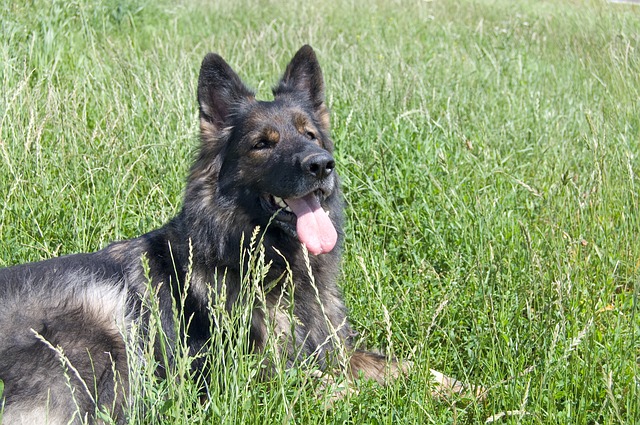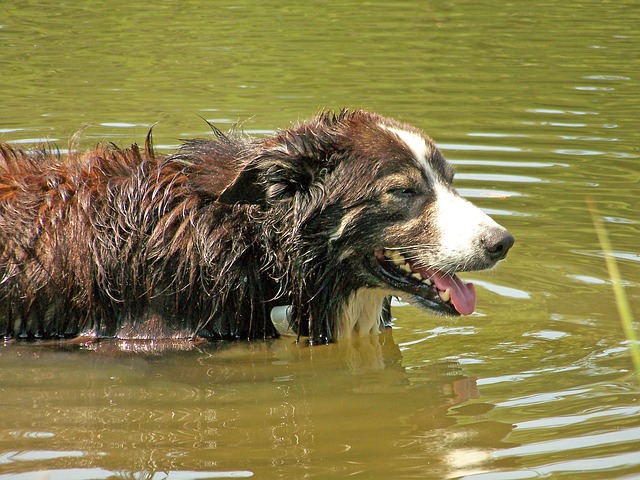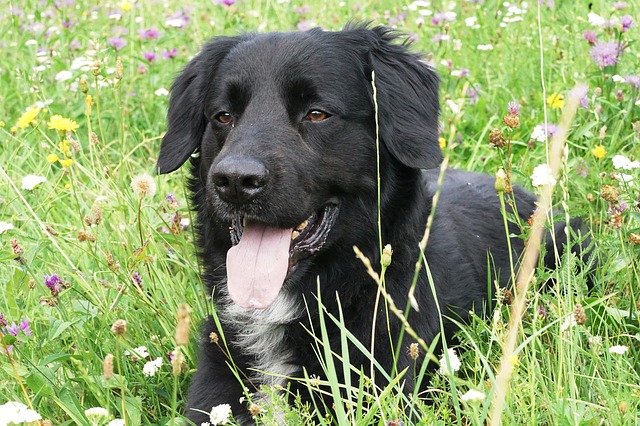As the days are warming up in the northern hemisphere, it’s time to start talking about heat stroke again. Do you know the signs of heat stroke in your dog? Do you know how to cool him down if he starts displaying symptoms of heat stroke? What are the best ways to prevent heat stroke in dogs?
We want you to be prepared, so here are some ways to keep your dog safe this summer.

What is heat stroke?
Heat stroke, also called hyperthermia, is a severe case of becoming overheated. Heat stroke can cause a number of potentially lethal problems such as dehydration, seizures, coma, and cardiac arrest.
What causes heat stroke?
Heat stroke is the result of a dog not being able to cool himself properly. Dogs only have sweat glands on the pads of their feet, so they pant to cool off. As you can imagine, this is only effective up to a certain point. Being out in the sun for too long, being in a car on a hot day, not drinking enough water, and getting too much exercise during the hottest part of the day are all examples of things that can cause heat stroke in dogs.

Signs of heat stroke
-Excessive panting (especially when the tongue is lolling out the side of the dog’s mouth or bright red)
-Increased or irregular heart rate
-Increased drooling
-Stumbling
-Red or pale gums
-Thick, sticky saliva
-Needing to lie down more
-Increased body temperature (Over 103° F is dangerous)
-Weakness
-Lack of appetite
-Dizziness
-Lethargy
-Vomiting
-Diarrhea
-Seizures

Treating heat stroke
If your dog is displaying mild to moderate signs of heat stroke, you need to cool them down – but not too quickly, or you will cause more problems.
If your dog seems stable enough to start treatment at home, here are some things you can do to bring down your dog’s temperature at an appropriate rate:
-Get him into the shade and preferably in front of a fan or AC
-Have him lay on an ice pack or wet towel
-Add ice cubes to his water dish
-Fill a wading pool or bathtub with cool – not cold – water, making sure not to let any water get in his nose or mouth
-Apply a cold pack to his head
Once your dog’s symptoms improve, you should take him to the vet immediately to have him checked for serious side effects that may have resulted from the heat stroke but may not be visible to you yet.
If your dog is showing severe symptoms of heat stroke, wrap him in cool wet towels, especially over the back of the neck, under the forelimbs, and in the groin area, and take him immediately to the vet. It could be a matter of life or death.

How to prevent heat stroke
Make sure your dog always has access to clean water and shade. Avoid taking them out or letting them get vigorous exercise during the hottest part of the day. If you just can’t keep your active dog inside all day, consider trying a cooling gel dog collar to help him beat the heat or venture on paths near water sources like streams and ponds so that your dog can cool himself off along the way.
Senior dogs, obese dogs, dogs with flat faces or other breathing problems, and dogs with especially thick coats are the most at risk of having a heat stroke.
Never leave your pup unattended in a car. The temperature inside a car on a warm day, even parked in the shade with the windows open, can rise to deadly levels faster than you would expect. Plus, a running car with a dog inside may be stolen.
A little bit of planning and preparation can prevent a lot of heartache for you and your pup this summer.
(H/T: Mirror, Pet MD, Drs. Foster and Smith)
